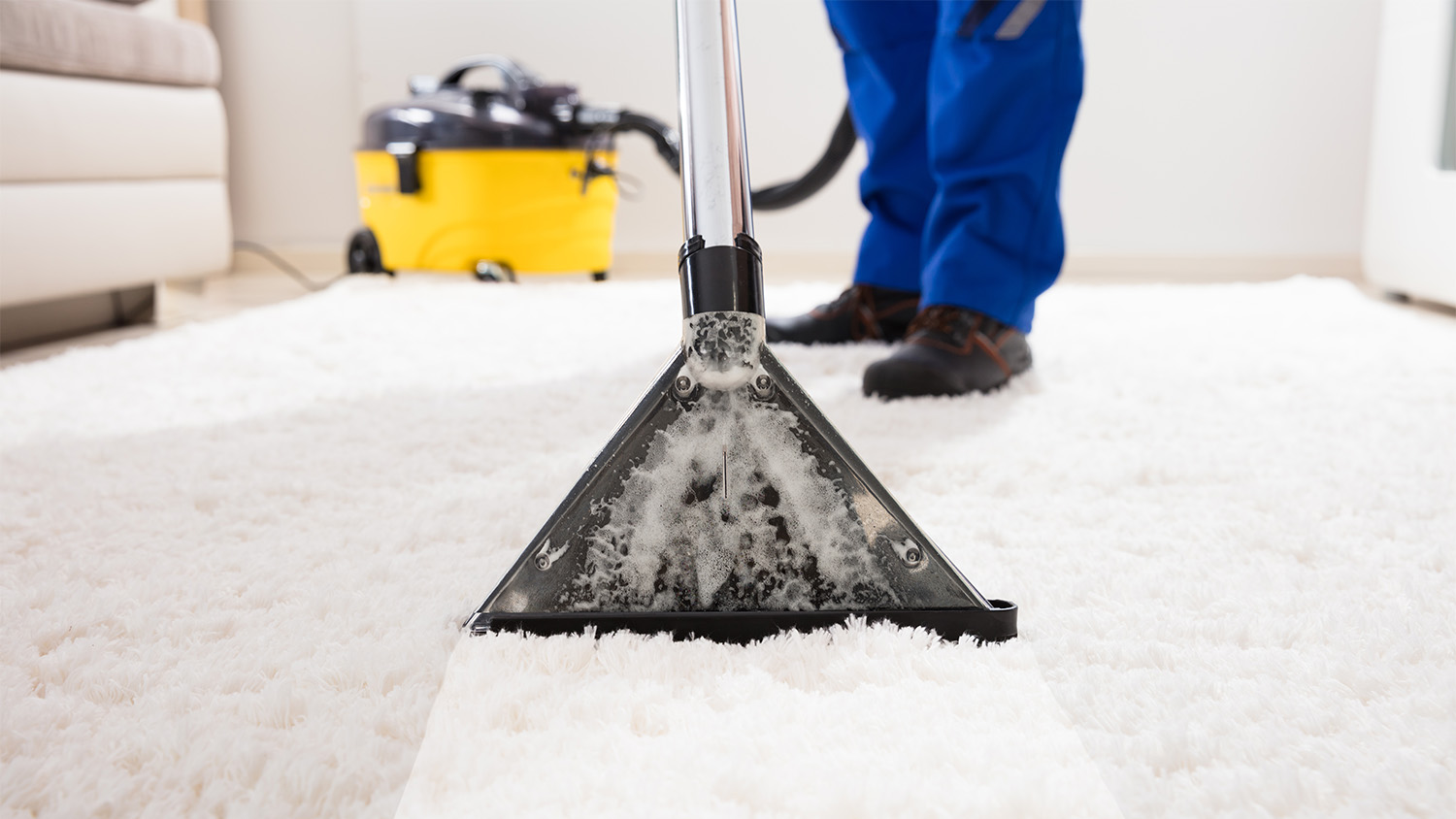
Discover the average professional rug cleaning cost, what impacts pricing, and how to save on your next cleaning. Get expert tips for homeowners.
Don’t let Mom’s spaghetti spell disaster for your flooring


Tomato sauce and noodles go together like peanut butter and jelly. But, unlike your afternoon PB&J, spaghetti sauce has been known to splatter and stain as you nosh on your favorite pasta dish. Fortunately, you don’t have to let the fear of sauce stains keep you from dining in your home. We put together a six-step guide to cleaning your carpets like a pro so you can chow down without fear of a tomato sauce-related snafu.
Always check any area rugs for care and cleaning instructions. Some carpets and rugs are made from materials that shouldn’t get wet or be exposed to abrasive cleaners.
Additionally, any time you use a cleaning solution on carpet or upholstery, test it out on an inconspicuous spot to ensure it won’t damage it. The last thing you want to do is discover that your favorite carpet cleaner not only removes spaghetti sauce but also lifts the color right out of your rug.
After you’ve gotten over your initial panic about spilling sauce on your rug, immediately pick up as much of the excess sauce as possible. Use paper towels to lift as much as you can off the floor without spreading the mess around. Avoid rubbing excess sauce further into your carpet fibers or around the stained area.
After picking up the excess sauce, get your cleaning supplies ready. Carefully follow the directions on any store-bought carpet cleaner you’re using. Generally speaking, the instructions will tell you how to apply the solution, how long to let it sit, and the best method for cleaning it up.
If you’re using a DIY mix (1 teaspoon of dish soap combined with 1 cup of water is excellent), you’ll want to prep your solution before heading back to the stain.
Apply your carpet cleaner liberally to the stain without saturating the carpet. Excess moisture can become trapped within thick carpet fibers and the padding underneath them, creating a hotspot for mold and mildew. Use a clean towel to gently blot the cleaner on or a spray bottle for a more targeted approach, working from the outside edges of the stain toward the center as you go.
After you’ve applied your cleanser, you can begin blotting up the mess with clean sections of the towel. Frequently rinse the towel in a bucket of water and use clean sections of the towel each time you go back over the spot.
Pro tip: Never rub a stain. While adding a bit of elbow grease can be useful when scrubbing tubs and tile, it can drive stains deeper into fibers and further spread them around.
Don't worry if you can’t completely remove the stains with just one pass. Tomato-based sauces can be tricky to get out, and most of the time, you'll need to run through steps three and four a few times before you're happy with the results.
If your stain isn't coming out following the directions above, it may be time to break out the big guns. Hydrogen peroxide (a 3% solution is best for jobs like this) can be an effective spot fighter. Follow the same steps you did with your carpet cleaner, including remembering to spot-check before getting started.

After cleaning your carpet to your satisfaction, dry it using a second clean towel. Cover the area with a towel, and then apply pressure, working your way from the outside of the stain toward the center. You can make as many passes as it takes to dry the area completely.
Add some fans and open windows to improve airflow in the area and help speed along the drying process to avoid any chances of mold or mildew growth.
If you’re dealing with a fresh stain, it’s always best to try and tackle it yourself before the sauce has time to set in. However, for older stains or those that are just too big to tackle on your own, you might want to consider calling in a local carpet cleaner. You can expect to spend an average of $0.20 and $0.40 per square foot for the cost of a professional carpet cleaning.
"Most professional carpet cleaning companies use stain-specific cleaning chemicals and commercial equipment to extract the food debris, leaving the fibers free of stains and scent,“ said Asya Biddle, Angi Expert Review Board member and manager of The Dustbusters, a family-owned and operated janitorial company in Williamsport, PA. “This step will ensure the area doesn’t become a ‘breeding ground’ for bacteria and mold."
From average costs to expert advice, get all the answers you need to get your job done.

Discover the average professional rug cleaning cost, what impacts pricing, and how to save on your next cleaning. Get expert tips for homeowners.

Oriental rugs are beautiful, but can be a challenge to keep clean. Learn how to clean Oriental rugs using this guide.